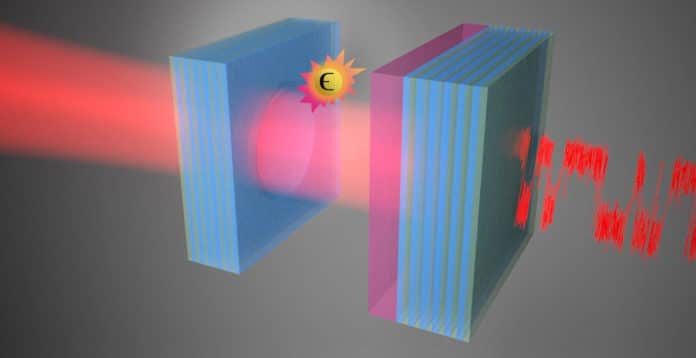In electronics, noise is an unwanted disturbance in an electrical signal. Generated by electronic devices, noise varies significantly as several different effects produce it.
Noise is always a problem especially in systems that are meant to detect changes in their environment that are hardly bigger or even smaller than the noise in the system.
An AMOLF physicist Said Rodriguez now has encountered this problem by demonstrating the way of turning noise into a resource for optical sensing rather than a problem.
Rodriguez works with resonant systems that can distinguish little changes in their environment. A typical optical sensor depends on a cavity, an empty space with laser light resounding between two mirrors. The resonance frequency relies upon what occurs in and around the cavity.
Rodriguez explained, “For example, a gas flowing through the cavity changes the resonance frequency, but so does a change in temperature or pressure. A typical detector measures this change in the resonance frequency as a change in intensity of light that comes out of the cavity. However, intensity fluctuations, i.e., noise, always disturb the measurement.”
“The most common way to reduce the deleterious effect of noise is to average the signal over a long period of time. This limits the detection speed, while in the vast majority of applications there is great value in sensing as fast as possible. Moreover, the detection speed is always limited by noise; even if all classical (e.g. thermal) noise is suppressed, quantum noise remains.”
Rodriguez proposes an optical sensing scheme dependent on nonlinearity, which implies that photons can successfully cooperate with one another inside the sensor.
He said, “Inside the optical cavity, we add a material that influences the resonating light in a non-linear way. The light that comes out is not a linear function of what went in, but it is bistable: for a given input, the output has two possible values. Due to inherent noise in the system, the output of the sensor flips randomly between those two values. When the resonance frequency of the cavity changes (e.g. because a particle enters the cavity) this flipping pattern changes as well.”
Analyzing the insights of the flipping pattern uncovers the change in the resonance frequency. Since noise increases the flipping rate between the two values, and a more prominent flipping rate implies less time is expected to gain adequate measurements, this implies that noise makes the sensor quicker. That is really remarkable.
Ultimately, quantum noise can never be fully avoided, so realizing sensors that embrace rather than avoid noise is useful. Rodriguez found that the sensitivity of this noise-embracing sensor depends on noise as well.
He said, “Just like the detection speed, the sensitivity increases with noise, but not continuously. It turns out that this sensor can perform optimally in the regime of quantum noise. This makes it an interesting alternative in regimes where conventional sensors cannot perform very well.”
Rodriguez determined the hypothetical detection speed limit of the proposed non-linear detecting scheme and contrasted it and the hypothetical detection speed limit of the linear sensor.
He plans to theoretically investigate the system further and eventually develop a physical sensor that embraces noise.
The study is published in Physical Review Applied.
